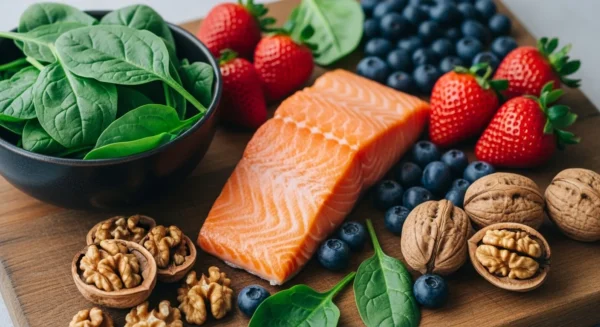
10 Actionable Strategies to Save on Everyday Groceries
Now that you understand the fundamentals, let’s explore the practical strategies you can use to achieve significant grocery savings. Implementing even a few of these tips will make a noticeable difference in your monthly spending.
1. Embrace Weekly Meal Planning
The single most effective way to save money on groceries is to plan your meals. Before you even think about going to the store, sit down and map out what you’ll eat for breakfast, lunch, and dinner for the upcoming week. This practice prevents last-minute, expensive takeout orders and impulse purchases. When you have a plan, you know exactly what ingredients you need, which leads directly to the next tip.
2. Master the Art of the Shopping List
Once you have your meal plan, go through your pantry, refrigerator, and freezer. Check off the ingredients you already have. Then, create a detailed shopping list with everything else you need. When you get to the store, commit to buying only what is on that list. Supermarkets are designed to encourage impulse buys, placing tempting items at eye-level and at the end of aisles. A list is your defense against these tactics.
3. Time Your Shopping Trips Wisely
When you shop can be just as important as what you buy. First, never shop on an empty stomach. When you’re hungry, everything looks good, and you’re far more likely to buy unhealthy, expensive snacks. Second, learn your store’s schedule. Many stores mark down meat, bakery items, and produce on specific days of the week to clear out older inventory. Ask an employee in those departments for the best time to find these deals.
4. Unlock the Power of Senior Discounts
One of the simplest ways to save is to take advantage of your age. Many national and local grocery chains offer senior discounts on a specific day of the week. These can range from 5% to 10% off your total bill. Stores like Kroger, Fred Meyer, and Albertsons have been known to offer these programs. However, they can vary by location and change without notice. Don’t be shy—always ask the cashier at checkout if they offer a senior discount. A 5% savings on a $100 grocery bill is an easy $5 back in your wallet.
5. Use Coupons and Digital Apps Strategically
Coupons are a classic money-saving tool. You can still find them in the Sunday newspaper and in-store flyers. Additionally, most major grocery stores now have their own smartphone apps with digital coupons you can “clip” with a tap. Be strategic: only use coupons for items that are already on your shopping list. Buying something you don’t need just because you have a coupon is not saving money. For those without a smartphone, sticking to paper flyers and in-store circulars is still a highly effective strategy.
6. Choose Store Brands Over Name Brands
Many shoppers are loyal to specific name brands, but that loyalty comes at a cost. In most cases, the store’s private-label brand (like Kroger’s “Private Selection” or Walmart’s “Great Value”) is produced in the same facility as its name-brand counterpart. The quality is often identical, but the price can be 20-40% lower. Try making a few swaps on items like canned vegetables, pasta, flour, and cleaning supplies. You will likely not notice a difference in quality, but you will absolutely notice the savings.
7. Buy in Bulk (When It Makes Sense)
Buying in bulk from warehouse clubs like Costco or Sam’s Club can offer great value, but it’s not the right choice for everyone. It makes sense for non-perishable items you use frequently, such as toilet paper, canned tuna, rice, or coffee. However, buying a giant container of fresh spinach that will spoil before you can eat it is just wasted money. Before paying for a club membership, calculate if the potential savings outweigh the annual fee based on your household’s needs.
8. Reduce Your Food Waste
The average American family throws away hundreds of dollars worth of food each year. Reducing this waste is like finding free money. Get into the habit of using your leftovers for the next day’s lunch. Freeze extra portions of soup or casserole for an easy meal later. Understand the difference between food date labels: “Sell-By” is a guide for the store, not for safety, while “Use-By” indicates the last date for peak quality. Many foods are perfectly safe to eat for several days past these dates.
9. Consider Grocery Delivery or Pickup Services
While some grocery delivery services come with a fee, they can paradoxically save you money. How? By eliminating impulse buys. When you order online, you are not tempted by the smell of the bakery or the colorful displays at the end of the aisle. You can search for exactly what’s on your list, and you see a running total of your cart before you check out. This makes it incredibly easy to stick to your budget. You might find that the money you save on impulse purchases more than covers the cost of the delivery or pickup fee.
10. Explore Farmers Markets and Community Supported Agriculture (CSA)
Shopping at a local farmers market can be a great way to get fresh, seasonal produce, often at a lower price than the supermarket. Go near the end of the day, when farmers are often willing to offer deals to sell off their remaining inventory. You can also look into a CSA program, where you pay a farm upfront for a “share” of the season’s harvest and receive a box of fresh produce every week. This can be a very cost-effective way to eat healthy, local food.















